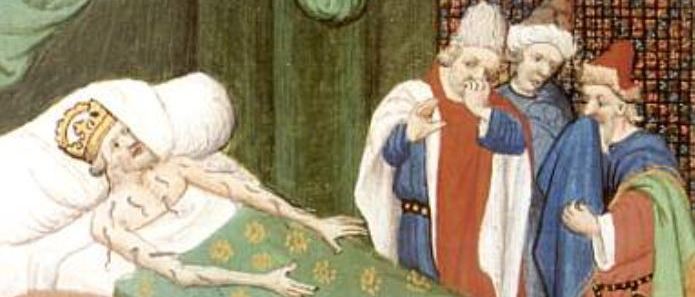Medieval Medicine
Posted on 5th August 2021
Medical science in Medieval Europe was based upon the writings of the Third Century Greek physician Galen who believed that the condition of man both physical and emotional was based on the four humours – blood, phlegm, yellow bile and black bile. An excess of yellow bile caused warm diseases while a surplus of phlegm cold diseases. It was an imbalance in these humours, known as the dycrasia that was the cause of illness and disease.
Thus, while the Church taught that illness was a punishment from God physicians sought to mitigate the Lord’s wrath by restoring the balance in the humours. The treatments they favoured included bloodletting, purges and emetics.
Leeches were regularly used to drain the blood from the body, but this was an expensive treatment and very much the preserve of the wealthy. It was thought improper however, for those of noble birth to have their blood drawn by the lower-orders and to allow such could set a dangerous precedent. It was a dilemma resolved by having a physician resident at Court who understood the courtly manners and protocols of attending to the rich.
In the case of the poor no such niceties were required, and cuts would be made and the blood physically expunged in haste to the body for fear of contamination.
The diagnosis, before and after treatment was made according to the colour and smell of the bodily fluids. As such, human urine, excrement and other bodily waste were much inspected in medieval society.

The teachings of Galen, which were to dominate medical thought well into the eighteenth century, also had considerable impact both socially and culturally. This was particularly so in the case of women.
According to Galen a woman’s womb is essentially cold so to prevent it from freezing over it must be regularly lubricated with male sperm. It was only through frequent copulation that fluids could be released that would otherwise coagulate and poison the host body.
This freezing of the womb, the Green Sickness, was believed to affect a woman’s mood and an over emotional response to events or a tendency towards tears were considered an indication of illness. A woman who nagged for example displayed the frustration of not having had enough sex – it was a licence to rape.
Even though rape was a crime it was almost impossible to prove and why it was thought should a man be punished for merely assisting a woman in the facilitation of a natural and necessary bodily function? If a woman became pregnant as the result of being raped, then it must have been because she enjoyed it. After all, a child was a gift from God. If so, then it was also the gift of hard graft for giving birth was both perilous and painful. It is difficult to ascertain with any certainty the ratio of women who died in childbirth but it has been estimated by some to be as high as 1 in 4.
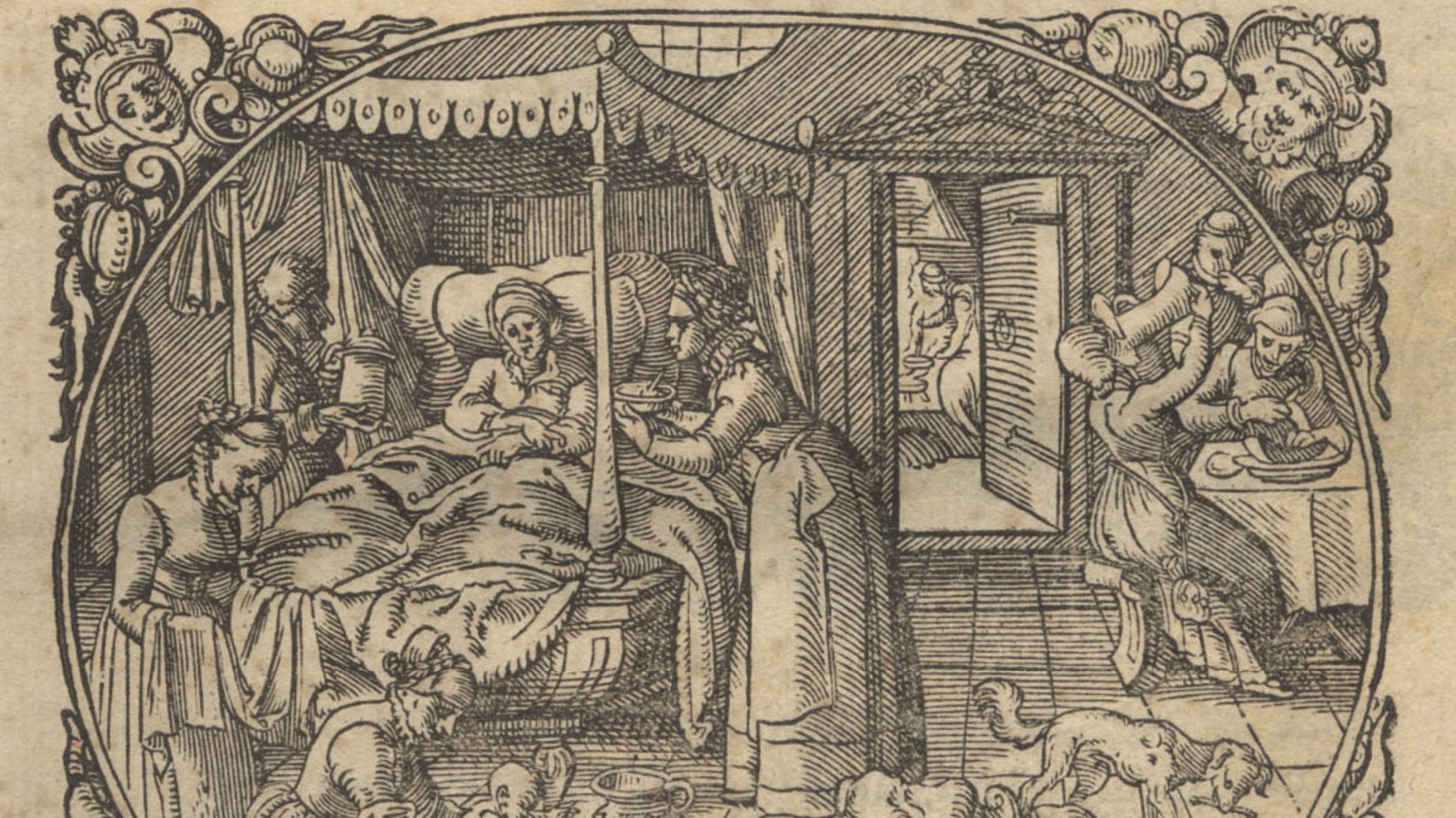
Male doctors rarely attended during labour which was considered a woman’s domain even though the women who assisted in the delivery had no formal training their experience being the fact they had previously given birth themselves or had been in attendance when another had done so.
Although the actual process of childbirth was well understood any complications would invariably result in the death of the mother, the baby, or both. The safe delivery of a child was in God’s hands.
To treat the pain of childbirth rose oil would be rubbed into the skin and the mother given vinegar to drink. She would also be provided with a crucifix to hold as prayers were chanted for her safe delivery and that of the child. Following the birth, the mother would have to undergo ‘churching,’ a series of rituals undertaken before she would again be thought fit to re-enter the community. These would vary from place to place but would often involve having her naked body washed before being sprinkled with holy water, followed by a private blessing, and constant prayer over a number of weeks.
The trials of the new mother would not cease with the end of churching for a period of confinement would follow as a fertile and resilient young woman would be vulnerable to kidnap.
Surgical techniques were always in advance of the scientific understanding of disease and surgeons could re-set bones and carry out operations such as the removal of a gall bladder and even carry out a Caesarean Section.
Always present on the battlefield surgeons regularly bound up wounds using extracts from plants such as Mandragora to anaesthetise the patient and egg white to stem the flow of blood. They had no understanding of germs however, and the bandages applied were often more deadly than the open wound.
Medicine was first recognised as a profession in England in 1215, and Physician Guilds quickly emerged. Prior to this anyone with an ailment that required treatment would have approached a herbalist, even though it could often to be difficult to find one for practitioners of herbal medicine were always liable to the accusation of witchcraft and as such were reluctant to treat any illness they thought too severe. If the patient recovered it could be considered magic, if they died, they would often have to face the wrath of the patient’s family. Either way, the charge of witchcraft was an ever-present fear.
Herbs formed the basic ingredient of medieval lotions and potions as indeed they still do today. For example, coriander was used to treat cramp, dill to treat indigestion and fennel to treat fever. An understanding of herbal remedies was highly regarded but also greatly feared for it was just as easy to poison as it was to cure.
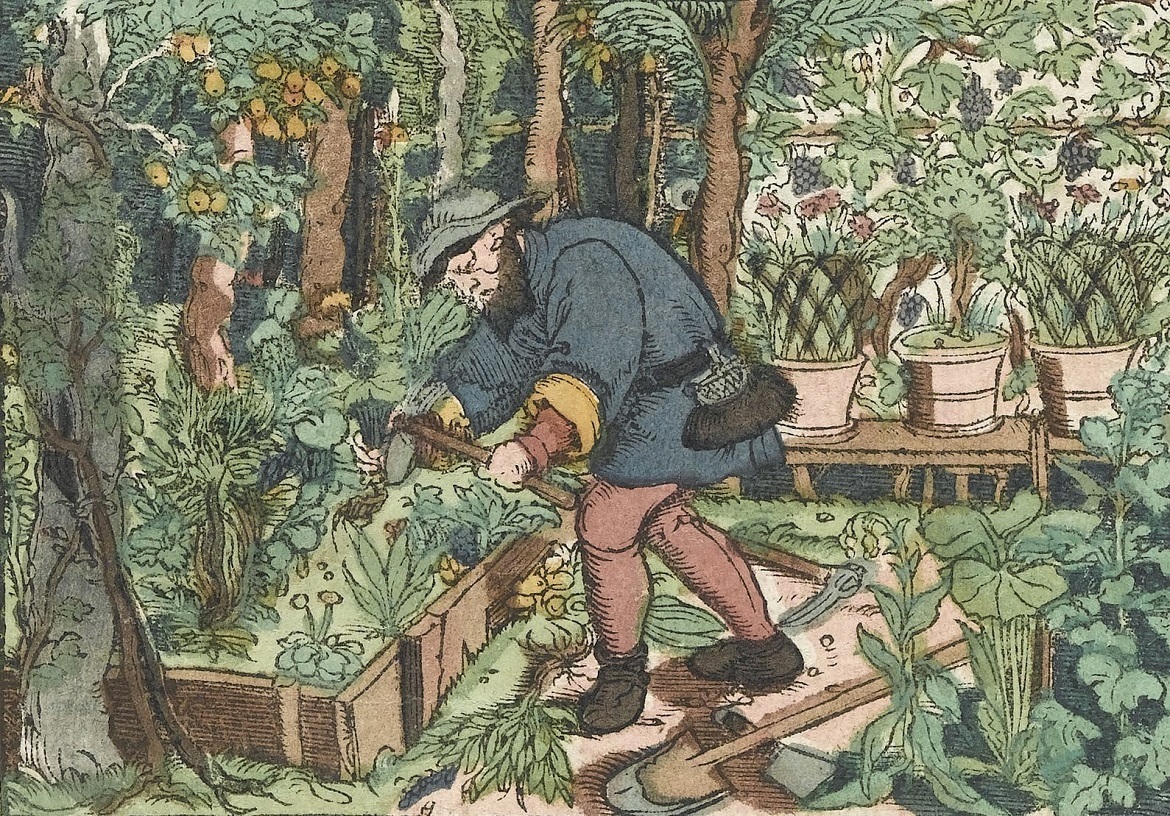
Most monasteries possessed a herb garden and as a result became centres of both diagnosis and remedy. Likewise, most medieval hospitals were affiliated to monasteries and were places of ritual and prayer where good order and regular diet were considered to have a beneficial and therapeutic effect. It was also possible in a hospital to be treated by a doctor but hospital attendance was neither free nor cheap.
Unlike the herbalists or the ‘Wise Men’ and ‘Wise Women’, the new medical profession possessed the power of the law and the endorsement of the Church along with the power of their prayers. Those who became doctors were University Graduates and often used their knowledge of numerology, astrology and the movement of the planets in their diagnosis of what ails a man, and these newly qualified physicians would be busy in a world where illness was commonplace with each season bringing its own problems.
The winter months were cold and unforgiving especially for the worse off in society whose clothing would be threadbare at the best of times. In truth, the only way to keep warm was to be near a fire but this was easier said than done. The Royal Forests were off-limits to commoners and wood for burning was a much sought-after commodity.
In the autumn it was common practice for the nobility to allow, for a small fee, the collection of branches and twigs that had been blown to the ground by the high winds. The trees themselves however remained strictly off-limits.
The colds and coughs caused by the bitter winter months were as common then as they are now but at a time when there were no drugs available to alleviate the symptoms, and unable to stay warm it was not unusual for people to die of them.
The summer too brought its problems, the rough wool which was the standard wear for peasants and town dwellers alike, lead to skin lesions which often left the flesh bloodied and raw. Doctors would treat these with balms and lotions based on the old herbal remedies.
They could do little about the summer heat and poor sanitation that lead to the rapid spread of unspecified diseases for most of which there was no treatment and were invariably lethal.
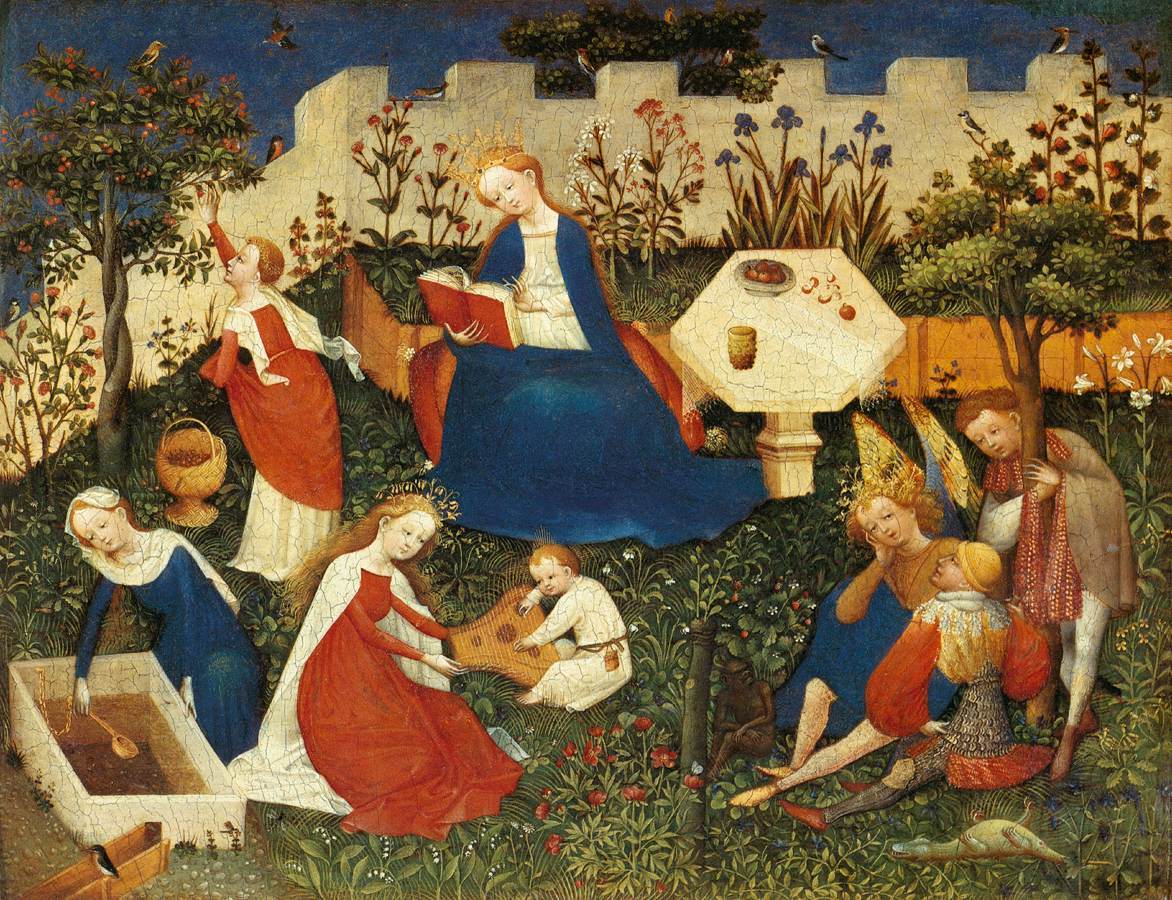
Diet was also a regular source of illness. Fruit such as apples and berries would be eaten as treats but raw vegetables were avoided as they were thought to be unhealthy. The wealthy ate predominantly meat supplemented by cheese and fine wines. They did not consume vegetables, cooked or otherwise, as this was peasant food and beneath them. Likewise, the poor were unable to eat meat unless it was poached. They survived instead on diet of thick bread made of barley and rye, soups made with ingredients such as cabbage, leeks, onions, parsley, and garlic. A rabbit illicitly acquired was considered a treat and with food always scarce anything larger a reason for celebration.
Rivers and lakes were used as open sewers and so water was rarely drunk even if made palatable with honey, instead a great deal of warm beer was consumed.
Medieval diets were not high in protein and dietary problems were manifest. All strata of society suffered from deficiencies and gastric problems were an everyday occurrence with warm herbal drinks were believed to hold the remedy, either that or a hot poultice on the stomach.
Many of the remedies to commonplace illnesses would appear bizarre to us today: toothache, for example, was believed to be caused by a worm within the tooth trying to gnaw its way out. The cure was to hold a lit candle as close to the tooth as possible without burning the skin.
Headaches were believed to be caused by evil spirits and in the case of persistent headaches a process known as trepanning would be undertaken. A surgeon would drill a hole in the skull to release the malignant spirit. If it was felt that a portion of the brain was diseased then a cut would be made in the skull and the diseased portion removed.
Another commonplace in Medieval European pharmacopoeia was Powdered Mummy, a mixture of crushed bones, often of animals but sometimes of executed criminals, treacle and seasoning. It was mostly applied externally but could also be consumed. It was believed to contain the remains of mummified ancient Egyptians but was usually manufactured much closer to home. Doctors used it to treat various ailments including gout, abscesses and ruptures.
The existence of mental illness would not be diagnosed for many centuries.
Although melancholia was recognised as being caused by an imbalance in the humours anything from a stammer to what we would recognise now as schizophrenia were believed to be a curse from God and would often be referred to as the Devil’s Affliction. Masses would be held, and prayers said for such people but there were no institutions to care for the mentally ill. They would be made to wander the countryside as beggars to be avoided, ridiculed or taken advantage of.
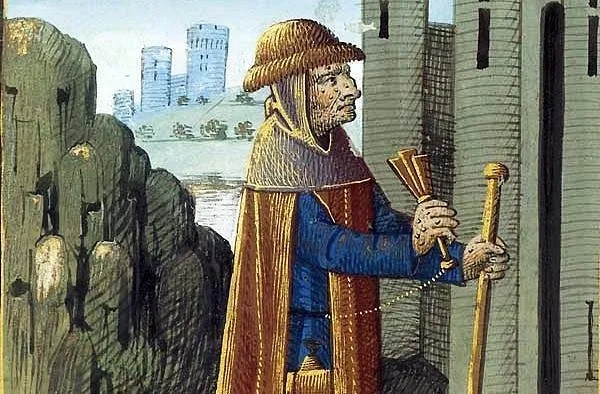
The most feared disease in Medieval Europe was leprosy, this disease of physical waste and decay terrified people. The leper was perceived to be death in life, as if the maggots were eating the afflicted whilst there was still breath in their body. They were forced to live in isolation and there were more than 2,000 leper colonies in France alone.
Fear of leprosy was soon to be supplanted however, by something far more terrible and frightening.
In 1347, a plague arrived in Europe from the East. It was believed to have been carried upon the backs of the Mongol Hordes, at the time ravaging the Crimea. It was to sweep across Western Europe leaving a trail of death on an unprecedented scale in its wake – no one had ever experienced anything like it.
The Bubonic Plague, or Black Death, was to reach the shores of Britain the following year.
The Black Death, or Yersinia Pestis, was to be the most lethal pandemic in human history. It spread across the continent wiping out more than a third of the human population, perhaps as many as a hundred million people. The population of Florence, for example, was reduced from 120,000 in 1347 to less than 50,000 by 1351. The Italian poet Giovanni Boccaccio wrote:
“The condition of the people was pitiable to behold. They sickened by the thousands daily, and died unattended and without help. Many died in the open street, others dying in houses made it known by the stench of their rotting bodies. Consecrated churchyards did not suffice for the burial of vast multitudes of bodies, which were heaped in the hundreds in vast trenches.”
There were various forms of the Bubonic Plague, but all were fatal and the mortality rates were close to 100%.
The first symptoms would be a high temperature, general nausea, and vomiting. This would be followed not long after by a swelling of the lymph glands in the groin and under the arms, the so-called buboes. This was accompanied by severe skin discolouration, hence the name Black Death. The unfortunate victim would often be dead within 48 hours of first contracting the illness drowning it seems in his own blood.
The Black Death spread by black rats was transmitted from human to human upon physical contact or by the merest droplet from a person’s mouth. The medical profession had no knowledge of this, however. They believed it was the result of foul and putrid air caused by the stench of human waste and rotting corpses. They called it the miasma and so to cure the illness it was first necessary to eradicate the putrefaction. At the height of the Black Death, King Edward III wrote to the Lord Mayor of London: “Cause the human faeces and other filth lying in the streets and lanes in the city to be removed with all speed to places far distant, so that no greater mortality may be caused by such smells.”
If foul smells were the cause of the disease, then in sweet smells must it’s the cure.
People carried flowers on their person, hung them around their neck or held them to their nose. But flowers made little difference neither did the cleaning of the streets of human waste, the burying of the victims in deep pits or the burning of their clothes.
The medical profession was at a loss to find a solution and a myriad of cures were tried:
The lancing of the Buboes, the tell-tale swellings on armpit and groin, became common practice. These were cut open to allow the disease to leave the body. A mixture of tree resin, the roots of white lilies and human excrement were then applied to the cuts.
The Water and Vinegar Treatment saw the patient stripped naked and washed in rose water before having vinegar rubbed into every part of his body. He was then put to bed. If he was still alive days later then the treatment had worked. If he was not, then it had not.
Medicine was also tried, and a typical recipe would read thus: “Roast the shells of newly laid eggs. Ground the roasted shells into powder. Then chop up the leaves and petals of marigold flowers. Put the marigolds and egg-shells into a pot of good ale. Add treacle and warm over a fire. The patient should then drink every morning and every night.”
None of the solutions worked and it soon became evident that the doctors were clueless what to do. As a result, people began to turn to witchcraft. But the suggestion that you should place a live hen next to the swelling to draw out the pestilence and drink a cup of your own urine twice a day was no more effective than the prognostications of the increasingly bemused and terrified physicians. Soon these same frightened doctors began to refuse to treat plague victims.
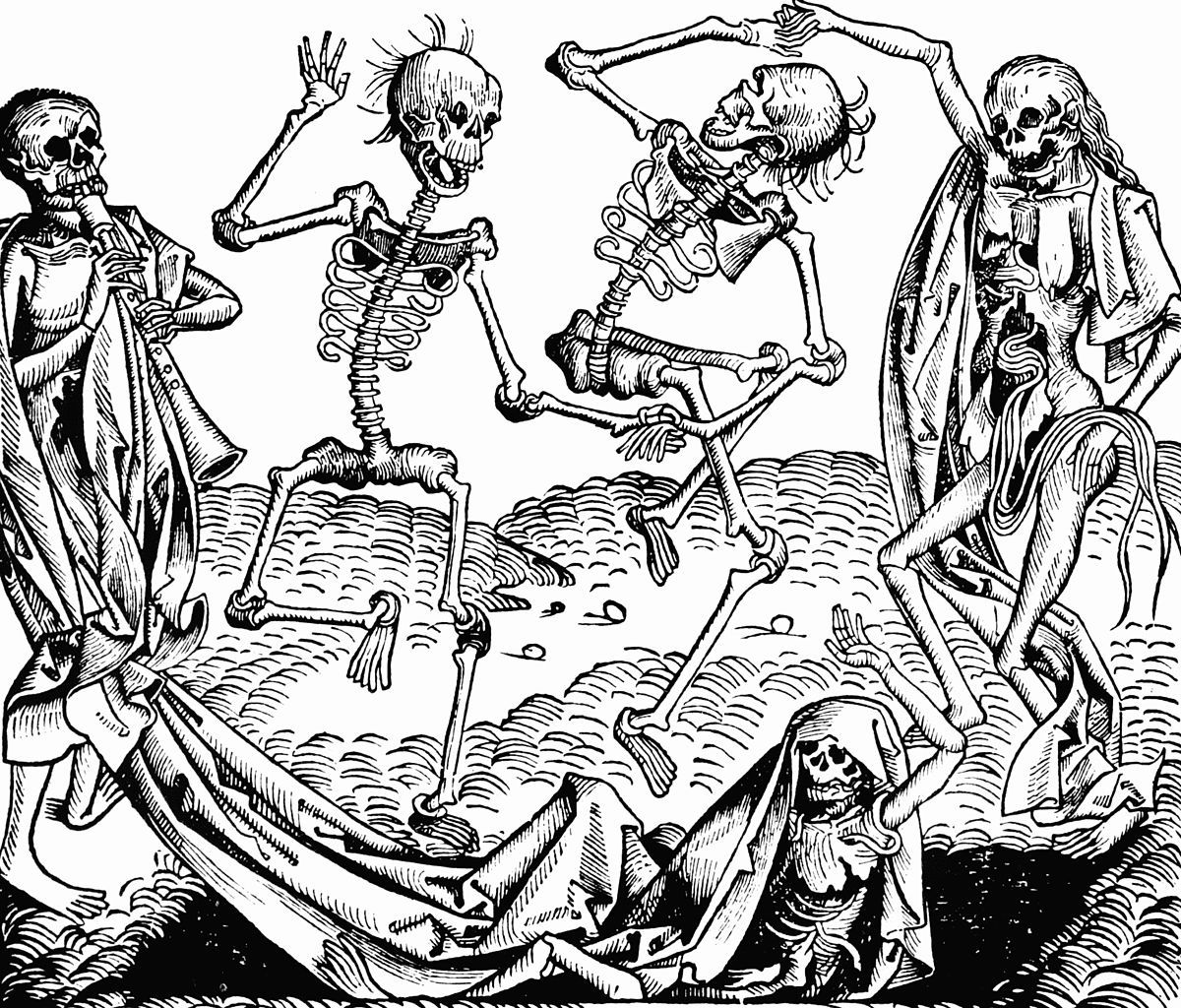
As the Black Death spread ravaging the country and reaping its harvest of human souls the Christian Church began to lose its spiritual authority. They had promised that with greater devotion and through the power of prayer the cure would come. They had declared that it had been God’s Will, but they could not explain why, and as thousands of priests, monks, and nuns died they were to show that they were just as vulnerable and frightened as everybody else. Members of Religious Orders could not be found who were willing to succour the dying, or perform the Sacraments, or to give the Last Rites. Eventually, the Church declared that anyone who was present, even a woman, could say a prayer for the dying.
Neither the Medical Profession nor the Church, were able to understand or cope with the greatest tragedy that had ever afflicted mankind, and a morbid fatalism soon took over best reflected in the children’s nursery rhyme: “Ring around the rosy, a pocket full of posies, atishoo atishoo, we all fall down.”
Overwhelmed a traumatised country began to witness the breakdown of the social order as husbands left their wives, properties were abandoned, mothers refused to tend to their children, labourers failed to turn up for work and Church Services went unattended.
In Avignon, meanwhile, Pope Clement VI survived the plague. He had been advised by his physician Jean de Chauliac remain indoors, see no one and sit between two fires and breathe in the pure air. By doing so he had inadvertently found that heat was a way of both preventing and combating the plague, though no one knew this at the time.
It would take centuries for the Medical Profession to recover a reputation shattered by its impotency in the face of human tragedy.
Tagged as: Ancient & Medieval
Share this post:





